
If you want more background details, read here. The collapse of the modern worldMost people have only heard stories of how life was before the Hydra – the parasite that almost ended human civilization. 60 years have passed since the great collapse and most of those who lived in the old world have passed on. Sure there are books with history and stories still remaining, but they only give a vague and incomplete of that golden age.In the year 2040 the world was a very different place, where technical wonders almost unimaginable for us were a part of every aspect of society and each day brought new discoveries. There were dreams of a future among the stars and that future was nearly within grasp. Of course, political conflicts still remained and in many cases the conflicts during the early part of the century had only grown worse. But there was real, tangible hope. But then the Hydra struck. No real answer has ever been found as to where exactly the parasite came from, only theories. Its effect on the world, however, was devastating. Histories tell that the first outbreaks happened somewhere in Russia and spread from there like a wildfire. It was a nightmarish thing, which as soon as it had infected a human host started trying to take over the organs, with lethal results. But what made it all the more terrifying was its violently mutating nature. Each time it was threatened or spread to a new host it mutated again which resulted in many different strains and made it completely unpredictable. This is what gave it its name, “The Hydra”, the monster with a hundred heads. It also proved very unpredictable in the way it spread from one host to another and soon it had spread to every continent. In the rising chaos that was spreading through the world the race for a cure, or at least an effective treatment grew ever more desperate. With every passing day, the mountains of corpses grew and the Hydra became more and more unmanageable. Suddenly the Chinese authorities released news that they had found an effective cure which would be produced and spread among Chinese citizens. No one really knows if there even was a cure or if it was empty propaganda. No reliable accounts remain of what happened afterwards. Desperation and political maneuvering soon escalated to a large scale war between the great powers, to get control of the secret behind the cure. This quickly developed into a series of conflicts to control vital resources and research. And in this chaos, the Hydra thrived, and the war inevitably spread to smaller nations until the whole world was consumed. There were no longer any nations left standing, only battered and worn survivors who had abandoned the ghostly cities. The flame of humanity was small and flickering. But it refused to die. 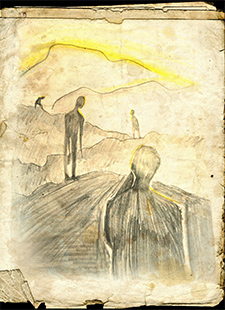 Drawing by Julia Vestman From out of these ruins survivors rose on trembling legs. The world as it once had been did not exist any more and it never would again. The Hydra still spread through the world and few places in the world were really safe. But the true strength of humanity has always lain in cooperation and slowly but surely small settlements were formed. Piece by piece a new order was being built and among the ruins of the old world the flowers of a new one were beginning to bud. Finland and OstrobothniaThe wars never reached Finland for real, except as a midway point for troops on the way to or from Russia in different stages of the war period. Its role was too small and unimportant in the big picture. Though the news were filled with atrocities and you sometimes could see squadrons of attack planes soaring over the cities, the blood spill and devastation never reached your home.But the Hydra was not as merciful and no one lived through that period without losing many a near and dear. Finland was one of the first countries that the Hydra spread to, so there was no preparations in place. Helsinki, Tampere and Turku fell quickly, being reduced to ghost towns. Vaasa and Oulu very nearly went under early as well, but managed to control the first outbreaks after having seen the danger that the parasite posed. But the Hydra was too alien and merciless to be controlled for long and soon all major cities were evacuated, given back to mother nature's care once more. Smaller towns in the country now became safe havens for survivors, but the mass death had made people paranoid and suspicious. Many places that managed to keep the Hydra away fell to internal conflicts and fighting instead. 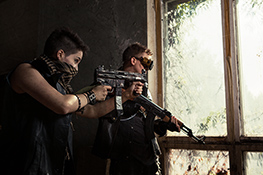 Photo by Jacob Åberg There was a handful of of settlements that managed to keep order though, among them Närpiö, which today is the closest thing you can find a secure settlement in western Finland. When the parasite was spreading, the defense forces were posted all around the country to help set up quarantine and maintain order. When it became clear that Vaasa wouldn't make it, a large contingent of soldiers set up a post in Närpiö, setting up barricades and guard posts to make sure the Hydra would not be able to spread there – with force if necessary. The early years have been described as hard and trying, with many difficult sacrifices. But the city stands and thrives to this day and has become something of a mirage for those that move in the western and middle parts of Finland. They say there is still working technology from the old world there and that the people there live lives that you could never even imagine. But it's hard to say how true this is, as those who are let inside the gates will hardly go out again and the city's inhabitants are extremely careful about who they let in. The Hydra is still a big threat and it has only become more subtle and hard to spot over the years. Many have tried to get in, but very few are allowed to enter... 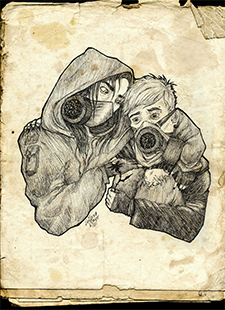 Drawing by Lillemo Ray The surroundings and lifeExactly how big a part of humanity that died during the big collapse is uncertain, but the already sparsely populated Finland is now even more of an untamed wilderness. Nature has reclaimed the almost empty cities, where squares are now blossoming meadows and the shopping centers have become wondrous, green caverns. Many animals have made the ruins their home, and even some people dwell there, though they inevitably find that the cities draw unwanted attention. Shops stand empty, raided of everything useful long ago. Cars are slowly being buried under leaves and moss as they stand useless in a world without gas and electricity and the faithful bike has become the best means of transportation.Food is a constant worry, when all storages that were amassed during the war years were emptied a long time ago. Instead you have to rely on food that you grew yourself, or hunted or gathered in nature. People know much less than people did before the great collapse. Most have to rely on the words and knowledge of others or on the information you may have found in books. But the books from the old world only gives small bits of information and can be hard to contextualize. The knowledge of the old world lives on only through its written works and its survivors, who have had varying amounts of success in keeping and communicating that knowledge... The world is in many ways a dangerous place and survival is a constant struggle. The Hydra is a constant danger, when you can be infected not just by other humans but by animals carrying the parasite or from infected water sources. The scientists of the old world could never quite identify how the Hydra can spread, and so the children of the new world can only rely on carefulness. Animals are a problem even when they are not infected : since humans have almost disappeared, the animal populations have grown substantially, which also extends to predators. The wolf has reclaimed its place as man's greatest fear, but it is far from the only animal that likes to attack lonesome wanderers. To venture out on your own is something that should be done with great caution, if at all. Other people aren't always reliable either. Wanderers and scavengers could very well be infected with the Hydra for a long time without showing symptoms, making it very risky to show kindness to strangers. But some people are a hazard due to malice. Though wanderers can be simple Vultures who wander around trying to scrap together a meager survival among the ruins of the old world. They can also be Magpies, thieves that sneak into camps and settlements to steal food and useful things without a single care for their victims. But they might also be Red Ravens, different dangerous gangs and people who roam around and take what they want, using violence if necessary. It pays to be careful, but all things in moderation... You wouldn't want to turn away someone who would be useful for your own survival if you can help it. But the old world itself has left many hazards as well. Especially in Ostrobothnia there is a danger when old industrial areas collapse, releasing big clouds of poisonous gas that drift in from time to time. Breathing protection and gas masks are enough to shield you from harm, but those who are caught unaware could easily be poisoned or die. 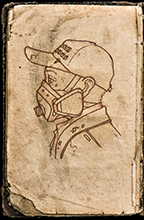 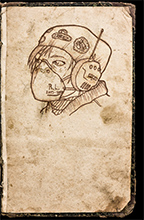 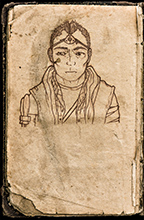 Drawings by Zacharias Holmberg CultureWhat little culture remains today often has to bow to the needs of survival. It is hard to express yourself when there is hard work to be done, but the inevitably comes a time when the human inside needs to come out. Exactly how that looks will vary a lot from settlement to settlement, when many assume an almost tribal behavior, where different influences shape the community in different ways.In many cases it is books, magazines, photos or other images that make you assume a certain belief, look or attitude. But there is even more influence in the stories that the survivors of the great collapse have told their children. These stories, which in their own time may have been seen as very trivial, can sometimes take on almost legendary proportions. Because how could a child that has never even seen a working t.v. ever understand massive virtual reality worlds or even the internet? To those whose world is very sparse and focused on only the most necessary a single image or history of the old world can be a great influence, a way to form an identity of your own. You express yourself with whatever few means your have. That means that the visual arts have taken a back seat to music. Even though it doesn't sound too often anymore, singing hasn't gone anywhere. Both songs from the old world as well as ones written after the great collapse are kept alive – though the old songs may not sound quite like they did in their own day... The HydraSince the great collapse the Hydra has become more rare, but it is far from gone. With time, different mutations have made it capable of transferring to animals and assume new shapes. Even to this day, one generation later, everyone knows someone who has died due to the parasite or maybe even had to end an infected's life, from mercy or self defense...The Nordic mutation tries, as every other version of the Hydra, to root itself into the organs and assume control over them. But with time it has evolved into a very treacherous thing, where early symptoms are very trivial. Dry coughing, fever and a bad stomach are very common but after two weeks it takes a turn for the serious. Severe cramps and pains, bloody cough and rapidly deteriorating vision lead to organ failure and a very unpleasant death. In rare cases the infected starts developing small hornlike eczema and deep, dark cracks in the skin. Approximate time from infection to death is about one month. But there are those that survive much longer, with the same lethal outcome. Most assume and say that the Hydra spreads through body contact or closed air but also through infected water. But whatever the facts are, the Hydra remains unpredictable, and caution is your best friend... | |||||||||||||